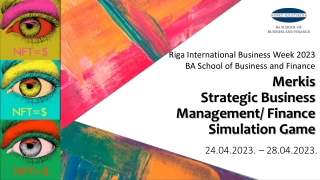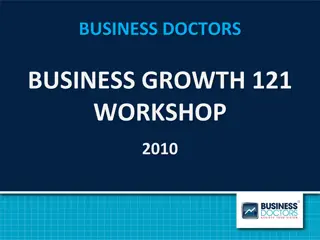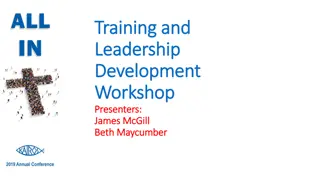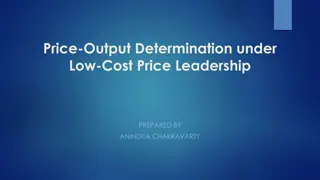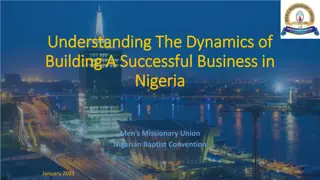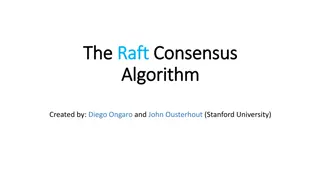Dr. Eliyahu M. Goldratt: Business Management Leader
Dr. Eliyahu M. Goldratt (1946-2011) was a globally recognized figure in business management, known for his innovative concepts and systems. His background in physics and education in Israel contributed to his success. The provided content outlines his contributions, including his patents for medical equipment and his impact on project management through books like "Critical Chain Project Management." This snippet offers insights into Goldratt's work, highlighting key elements like the Theory of Constraints and the Critical Path Method.
Download Presentation

Please find below an Image/Link to download the presentation.
The content on the website is provided AS IS for your information and personal use only. It may not be sold, licensed, or shared on other websites without obtaining consent from the author.If you encounter any issues during the download, it is possible that the publisher has removed the file from their server.
You are allowed to download the files provided on this website for personal or commercial use, subject to the condition that they are used lawfully. All files are the property of their respective owners.
The content on the website is provided AS IS for your information and personal use only. It may not be sold, licensed, or shared on other websites without obtaining consent from the author.
E N D
Presentation Transcript
Dr Eliyahu M Goldratt (1946-2011) MSc (physics), PhD: Bar-Ilan University, Israel Global leader- Business mgmt concepts & systems An Educator for world s corporations Holds patents for medical equipments
About Book The novel is set up in an Executive MBA school where there are discussion on various issues pertaining to Project management Book is useful for generating ideas, and for challenging the way we think Several different story elements are woven together
Contents Element 1: Critical Chain Project Management Element 2: Constraints Example Element 3: Theory of Constraints
Critical Path Method: Basic Technique Sequence of project network activities which add up to the longest overall duration determines the shortest time possible to complete the project. E.G. : Critical path
Element 1: Critical Chain Project Management What are the Problems common to all Projects?
Problems common to all Projects? 1. Time overruns 2. Budget Overruns 3. Compromising the content
Excuses for time over run Uncertainties are integral part of projects and Everyone knows about it Question If everyone knows about uncertainties then why they are not factored into in original estimates?
How Time Estimation is done in PM? Situation: Returning from work place to Home Usually about 25 min 1. Sometime 30 min depends upon traffic 2. Late night with signals off it may even take 15 min 3. Some work on the way- more time 4. Problems with road, rains etc - more time 5. If you stop-by with friends it may take even more
Last but not the least Mr Murphy is always present- uncertainty
How time is estimated of each step Median (centre Value) is at 50 % Time estimate which gives 50% chance is much shorter than 80 % chance 80% chance means about 200% safety Higher the uncertainty longer the tail Occurrences 80 % Safety Median 50% 30% 20 40 100 120 80 60 Time Estimate
Hidden safety Every time estimate has hidden safety It s not wrong everyone does it But
With so much of safety why many project do not finish on time?
Dr Goldratt Considers human factors contributing to wastage of time
With so much of safety why many project do not finish on time? A. No early finishers Will any task will be over before estimated time? 1. no one will report it or waste time 2. Even if one reports next team will not start
With so much of safety why many project do not finish on time? B. Student s Syndrome 1. Home work example 2. First fight for more time and when you get it you have enough time, so why hurry
With so much of safety why many project do not finish on time? C. Parkinson's Law 1. Work expands to fill the time available for its completion 2. Eg Software projects creeping elegance A
D . Multitasking Four projects each 4 weeks of different priority Multitask- Resources works one week on each project Without multitask- Highest priority finishes 9 weeks early
Critical Chain Method improvements
Critical Chain Method improvements To Shift the paradigm of organization culture
Critical Chain Method improvements a) Scheduling Backwards: Define project with tasks, durations and project dependencies backwards from end date Reason: thinking backwards is counterintuitive and therefore one is less likely to create unnecessary task dependencies based upon past practices.
Critical Chain Method modifications b) As-Late-As-Possible Scheduling:- Instead of ASAP from project start date. Critical chain planning tasks are scheduled as late as possible (ALAP).
Critical Chain Method improvements Benefits of Delaying work 1. not incurring costs earlier than necessary. 2. better focus to start 3. As work progresses knowledge base builds up thus benefits of increased knowledge are achieved reducing rework Drawback 1. All tasks become critical Solution : insert buffers at key points.
Critical Chain Method improvements Identify hidden safety in each task c) Inserting Buffers remove the safety from tasks based upon estimating form a pool of this safety and place it in shock- absorber buffers at key points simplest buffer at the end
Critical Chain Method Modifications d) Task estimating improvements i. Explain that safety removed is used as a project resource at vantage points ii. It is better to choose uncertainty rather than trying to better estimation. iii. When safety is removed , accept 50% probability of exceeding the initial estimate.
Element 2: Constraints Story of a acquisition of steel mill Only one constraint Operational measurement parameter Ton per Hour
Element 2: Constraints Constraint : Affects throughput or profits Discussion how prime operational measurement parameter affects the behaviour Example of Constraint: Steel mill monitoring in terms of Tons per hour
Element 2: constraints Tons/hour measurement Departments Try to maximise their performance Some items require less time per ton than others E.g.-Rolling 10 tons of 2 inch thick plate will require less time as compared to 1 inch plate
Element 2: Tell me how you will measure me and I will tell you how I will behave Departments Try to maximise their performance tend to produce fast items at the expense of slow ones Results in high inventory of fast items and missing orders of slow ones
Element 2: Constraints Excess inventory ,wasted costs unreliable due date performance heated quarrels between departments All only due to wrong measurement parameter
Element 3: Theory of Constraints Discussion on manufacturing process
Theory of Constraints Constraint: Anything that limits a system s performance relative to its goal Aim is to better Global performance
Theory of Constraints: Five Focus steps to better Global performance
Theory of Constraints: Applied Soldier Analogy: Drum-Buffer-Rope (DBR) Slowest Soldier Determine the speed Drum: Synchronise with slowest soldier by beating drum Rope: Prevents soldier from spreading Buffer: Length of Rope and constraint range of fluctuation
Key Take away (Although tough to implement) Think from throughput system point of view and subordinate all other aspects to it




